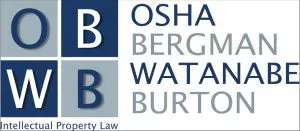In Virtek Vision International ULC v. Assembly Guidance Systems, Inc. 1, the United States Court of Appeals for the Federal Circuit (CAFC) reversed the Patent Trial and Appeal Board's (PTAB) determination that various claims of U.S. Patent No. 10,052,734 were unpatentable under AIA 35 U.S.C. § 103. The CAFC concluded that the PTAB erred as a matter of law with respect to how the "motivation to combine" doctrine was applied. In particular, although PTAB's rationale focused on a "finite number of identified predictable solutions" in satisfaction of criterion supplied by the U.S. Supreme Court in KSR Int'l Co. v. Teleflex Inc. 2, the CAFC asserted that the recognition of finite alternative arrangements by itself is not sufficient to meet the motivation to combine requirement.
In KSR, the Supreme Court counseled against "confining the obviousness analysis by a formalistic conception of the words 'teaching, suggestion, and motivation'" and endorsed a "common sense" approach because "rigid preventative rules" denying "recourse to common sense ... are neither necessary under our case law nor consistent with it." The CAFC, in applying KSR, has held that common sense "cannot be used as a wholesale substitute for reasoned analysis and evidentiary support" 3 and that there must be some "articulated rationale ... that a combination of prior art would have been 'common sense'."4 In other words, while flexibility can be applied to a proposed teaching - suggestion - motivation framework for a determination of obviousness – and even to the use of common sense – common sense must still be supported by an articulable, that is, explainable, reason to combine prior art references.
In Virtek, the CAFC stated that "KSR did not do away with the requirement that there must exist a motivation to combine various prior art references." Further, the CAFC noted that although possible arrangements existed in the prior art, neither the petitioner (Aligned Vision) nor the petitioners expert made an argument, or explained, why a skilled artisan would combine the contested elements of the prior art other than that the elements were known to be used. Thus, the CAFC concluded, in reversing the PTAB's decision that claims of the '734 patent were unpatentable, that it "does not suffice to simply be known" and a "reason for combining must exist."
The Virtek decision strongly aligns with recent guidance from the United States Patent and Trademark Office detailing five points for determining obviousness in view of KSR 5, which was the topic of a subsequent Osha Bergman Watanabe & Burton LLP Monthly Insights newsletter article.6 In particular, and as discussed in that article, a third point of the USPTO guidance reiterates that, while KSR describes a flexible approach to determining obviousness mandating a consideration of common sense, an Examiner still must provide a clearly articulated reasoning for the motivation to modify the prior art.
Overall, the CAFC's decision in Virtek serves as a reminder that determinations of obviousness under AIA 35 U.S.C. § 103 require some explained reasoning supporting a motivation to combine prior art such as "a design need or market pressure to solve a problem and there are a finite number of identified, predictable solutions," consistent with KSR. The CAFC's decision also highlights that mere common sense and the existence of "known" elements do not fulfill the requirements of a motivation-to-combine analysis.
Accordingly, during prosecution, when an Examiner fails to provide any explanation of the motivation why various references should be combined when making an obviousness rejection, or merely asserts that it would have been common sense to do so, the rejection should be challenged on this ground, as well as any technological distinctions.
Footnotes
1. Virtek Vision Int'l v. Assembly Guidance Sys., 97 F.4th 882 (Fed. Cir. 2024).
2. 550 U.S. 398 (2007).
3. Arendi S.A.R.L. v. Apple Inc., 832 F.3d 1355, 1362 (Fed. Cir. 2016).
4. In re Van Os, 844 F.3d 1359 (Fed. Cir. 2017).
6. https://www.obwb.com/newsletter/usptos-updated-guidance-for-making-an-obviousness-determination
The content of this article is intended to provide a general guide to the subject matter. Specialist advice should be sought about your specific circumstances.
We operate a free-to-view policy, asking only that you register in order to read all of our content. Please login or register to view the rest of this article.



